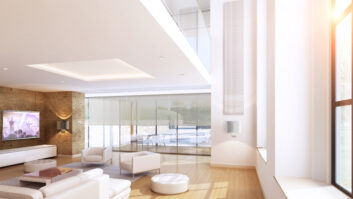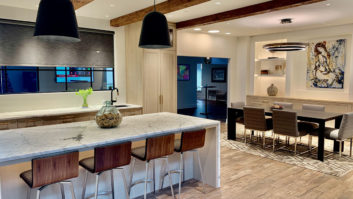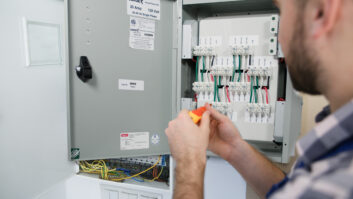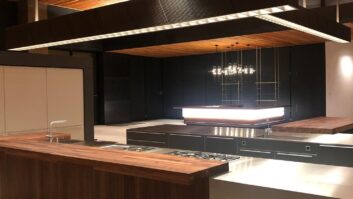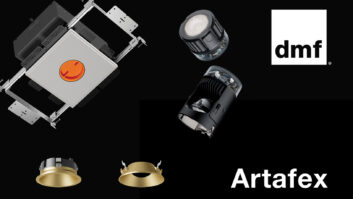Human-centric lighting is the ultimate technology “feel-good story.” Homeowners can feel smug about their automated lighting energy savings. Integrators can salivate over the category’s forecasted 34 percent growth rate. Best of all, it makes people feel good in general: human-centric lighting is a lifestyle upgrade, syncing light with our body’s circadian rhythms to boost mood.

As an integrator, it can also give you a leg up, showcasing your commitment to thinking forward and focusing on cutting-edge, health-enhancing tech. If you need a wow factor for your portfolio, this is the way to attract clients who want more than just a smart home — they want a personalized oasis right down to the lighting.
More Tips on Selling Lighting: Introducing the Residential Lighting Best Practices Guide
The catch is many homeowners haven’t seen — pun intended — this story yet. Selling advanced lighting solutions is challenging. Integrators must find a way to educate the consumer on why they need a human-centric lighting setup while trying to demonstrate how it could work in their homes. That is not an easy proposition when all you have are static images and some fancy brand marketing lingo. There’s no chutzpah or human connection with that.
Integrators need tools to help their customers envision themselves in the warm glow of a human-centric lighting system. Virtual, interactive demonstrations are becoming the new standard for doing just that, going beyond the physical to really spark curiosity.
The Benefits of a Virtual Demonstration
There is some solid data to back up the efficacy of virtual demos in broader consumer terms. Think with Google reports about 63% of customer journeys nowadays begin online. Before you can even think about demonstrating human-centric lighting in your showroom, you need to be able deliver digital wow factor.
Demos are a key component of the intelligent lighting sales journey. A virtual demonstration can help you reach far more customers than a physical showroom alone, educating them about what is possible, right down to color choices and shading, as well as making the argument for why they need human-centric lighting in their homes — with extraordinary efficiency.
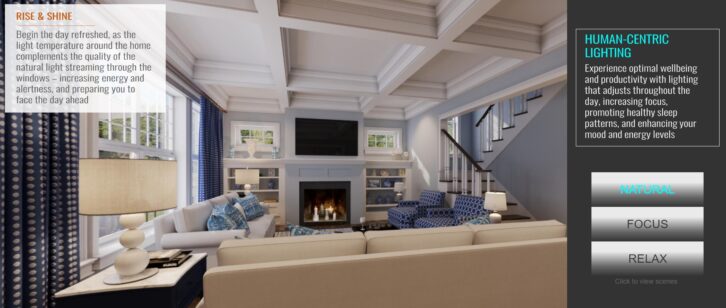
A customer who does visit your showroom can send their spouse a link to the virtual demo to get their buy-in on a lighting wellness upgrade. The demo gives you a way to engage not just on-site clients, but also additional key stakeholders who skipped the trip.
Take this virtual tour, for example — a “sample home” at the ready anywhere, giving consumers the experience of how different lighting concepts can impact rooms from dawn to dusk.
If executed correctly, the sky is the limit when it comes to how a virtual showroom can aid your bottom line.
How to Get Started
Implementing a VR showroom to knock your customers’ collective socks off will require some help. 3D content creation is a complex discipline, and creating photo-realistic scenes is challenging. You’ll want to work with a vendor, and you’ll want to work as efficiently as possible, avoiding costly change orders and time-consuming edits.
First, develop a clear, detailed plan for your use cases and needs. Figure out what kinds of human-centric lighting options you want to showcase and in what types of environments. Consider what lighting scenes, materials, and finishes are required to communicate the full benefits of sophisticated lighting control.
In addition, consider exactly how your demo will supplement the brick-and-mortar showroom. Will a salesperson guide the user through the demo, or will the experience be self-guided? These answers will help inform the type of interactivity and information built into the experience.
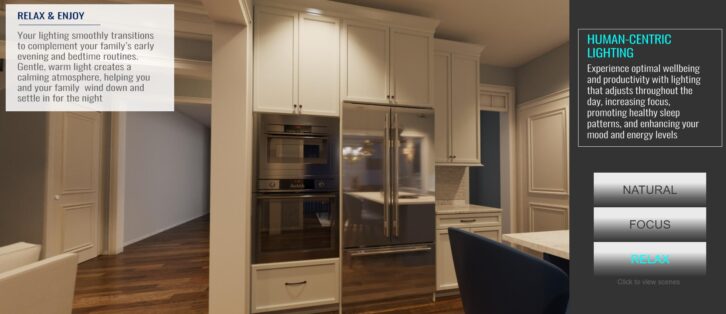
When evaluating vendors, look for a partner with experience in custom integration and/or architectural design channels. There are a lot of 3D content creation vendors out there, but many of them specialize primarily in product rendering and/or configurators. A 3D artist whose primary focus is accurately rendering individual products may not have an intuitive grasp of human-centric lighting, including the subtle nuances that characterize “good” lighting for various tasks and objectives. You can avoid hours of brief development and rework by selecting a vendor who already speaks the languages of technology and interior design.
Also by David Chace: The Power of AI and Virtual Design
Finally, consider reusability. A high-quality virtual demo is an investment you should be able to deploy in many contexts. Understanding the full scope of current and potential use cases will help you create a demo that meets your current and future needs. For example, if you’re planning to use this demo to add an X-factor to a home improvement or tradeshow booth, you need high resolution and rich detail that will look good on a large screen. If, by contrast, you’re planning to have a virtual tour autoplay when customers visit your website, you will need to prioritize asset interoperability and optimized file size. Ultimately, you may require a library of assets tuned to various use cases: the right partner will be able to make the right adjustments for each scenario.
When you can bring the showroom with you, an ultra-realistic virtual environment is an ideal way to engage, enlighten, and ultimately educate your customers, shining a light on the possibilities. Once customers see human-centric lighting in a full 360-degree view, they “get it” and are much more open to the idea.
